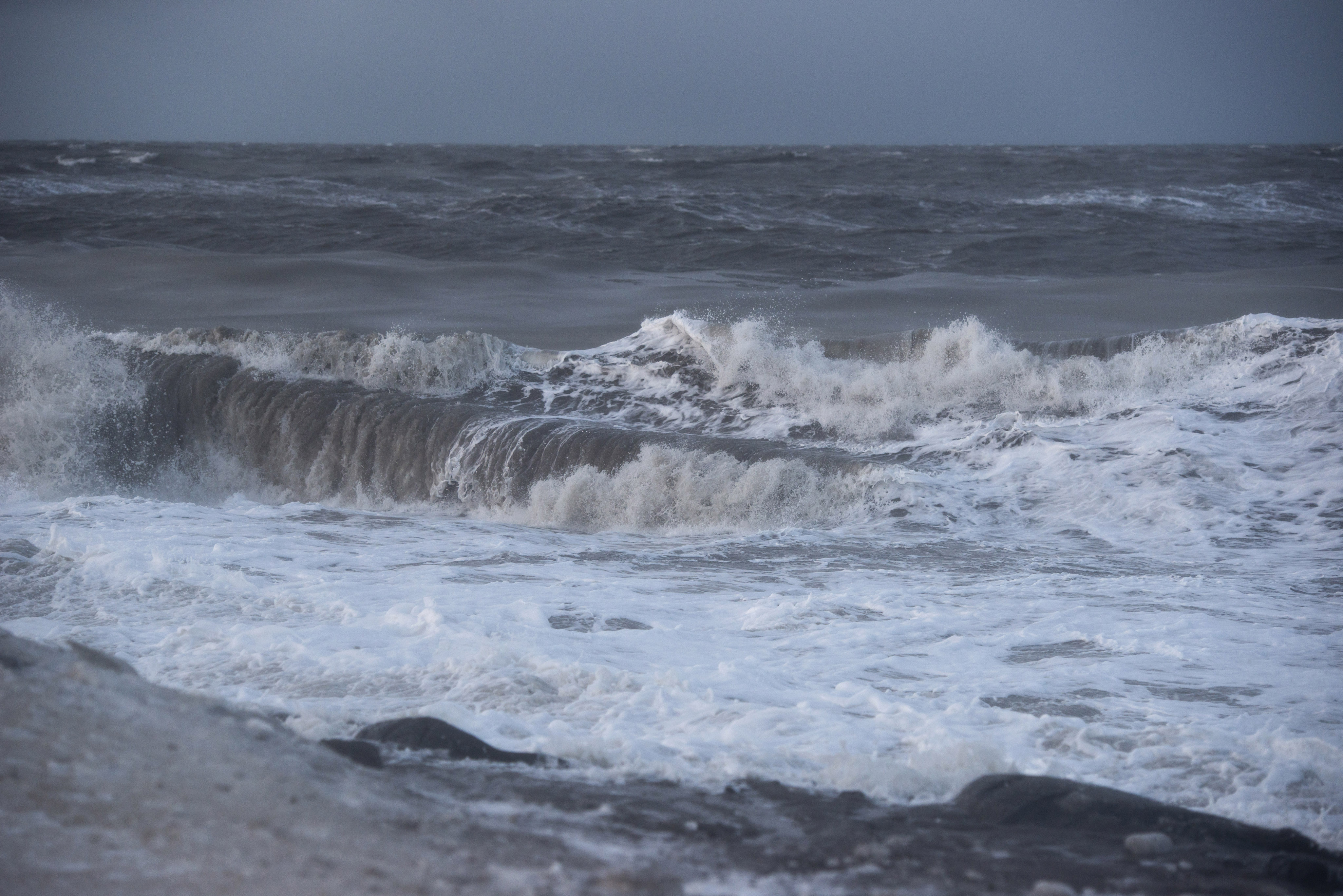By 2030, half the world’s oceans could be reeling from climate change, scientists say

More than half the world’s oceans could suffer multiple symptoms of climate change over the next 15 years, including rising temperatures, acidification, lower oxygen levels and decreasing food supplies, new research suggests. By midcentury, without significant efforts to reduce warming, more than 80 percent could be ailing – and the fragile Arctic, already among the most rapidly warming parts of the planet, may be one of the regions most severely hit.
The study, published Tuesday in the journal Nature Communications uses computer models to examine how oceans would fare over the next century under a business-as-usual trajectory and a more moderate scenario in which the mitigation efforts promised under the Paris Agreement come into effect. In both scenarios, large swaths of the ocean will be altered by climate change.
Nearly all of the open sea is acidifying because of greenhouse gas emissions. But the researchers found that cutting greenhouse gas emissions could significantly delay future changes, giving marine organisms more time to migrate or adapt.
“Things that live in the ocean are used to regular variability in their environments,” said lead study author Stephanie Henson , a scientist at the National Oceanography Center at the University of Southampton in Britain. “It gets warm in the summer and it gets cold in the winter, and species survive that kind of range in temperature or other conditions perfectly well.”
But she noted a warming climate could eventually cause changes in the ocean that have never happened before – hotter temperatures, lower pH or less oxygen than have ever naturally occurred. When this happens, some organisms may no longer be able to tolerate the changed conditions and will be forced to migrate, evolve as a species or face possible extinction.
There’s a large degree of uncertainty in the scientific community about how organisms will react. But there’s evidence to suggest major challenges ahead. Mass coral bleaching events in the past few years have been largely attributed to unusually warm water temperatures. Large-scale coral death on the Great Barrier Reef last year is thought to be strongly linked to climate change.
“So we wanted to know when will climate change actually push the system outside the range of natural variability that organisms are used to,” Henson said.
The researchers focused on four specific climate-influenced “drivers,” of marine ecosystems: temperature, pH, oxygen levels and “primary production,” or how much food is available to a community.
Some parts of the ocean are already experiencing certain climate-driven changes beyond the limits of their natural conditions. The researchers note in the paper that 99 percent of the open ocean is experiencing a climate-driven change in pH, or ocean acidification. The subtropics and the Arctic are also experiencing sea surface temperatures beyond their natural ranges. And these changes will only continue to spread.
Under a business-as-usual climate scenario, the researchers found an alarming portion of the ocean will be affected by changes in multiple drivers at once. By 2030, they projected, 55 percent of the world’s oceans will experience changes in more than one of these factors – temperature and pH, most commonly – beyond the range of natural variability. By 2050, this number rises to 86 percent.
The researchers focused on areas where multiple changes are occurring at once. “We think that multiple different factors occurring at the same time probably have different responses in the marine environment than just one factor at a time,” Henson said. “So, for example, the combination of warming and ocean acidification may be even more detrimental than just one of those factors alone.”
The projections suggest climate mitigation can stall these effects – at least for a little while. Under the moderate climate scenario, the researchers found, 34 percent of the ocean will be affected by changes in multiple drivers, and 69 percent by 2050. In general, they concluded that climate mitigation can delay the onset of climate-influenced changes by about 20 years.
“Mitigation doesn’t stop the emergence of multiple different stressors in the ocean, but it does slow things down quite significantly,” Henson noted.
This delay could buy time for organisms to move or adapt to their surroundings, the researchers said. Fast-moving fish may be able to migrate to more hospitable waters, while organisms with speedy generation times, such as plankton, may be able to quickly evolve to their changing environments.
On the other hand, organisms in places with very stable environments and low natural variability in their conditions – the subtropics, for instance – may be especially vulnerable to future, climate-driven changes. Certain parts of the world are also likely to see more rapid changes than others. Their projections suggest that the Arctic will be a particular “hotspot” for changes in temperature, pH and oxygen content.
Scientists are still struggling to figure out which organisms are mostly likely to adapt or move – and which are most likely to die. But they do know there are bound to be winners and losers and that some changes to marine communities are likely to be long-lasting, if not permanent – long after greenhouse gas emissions have been curbed.